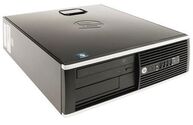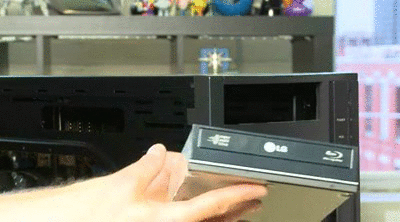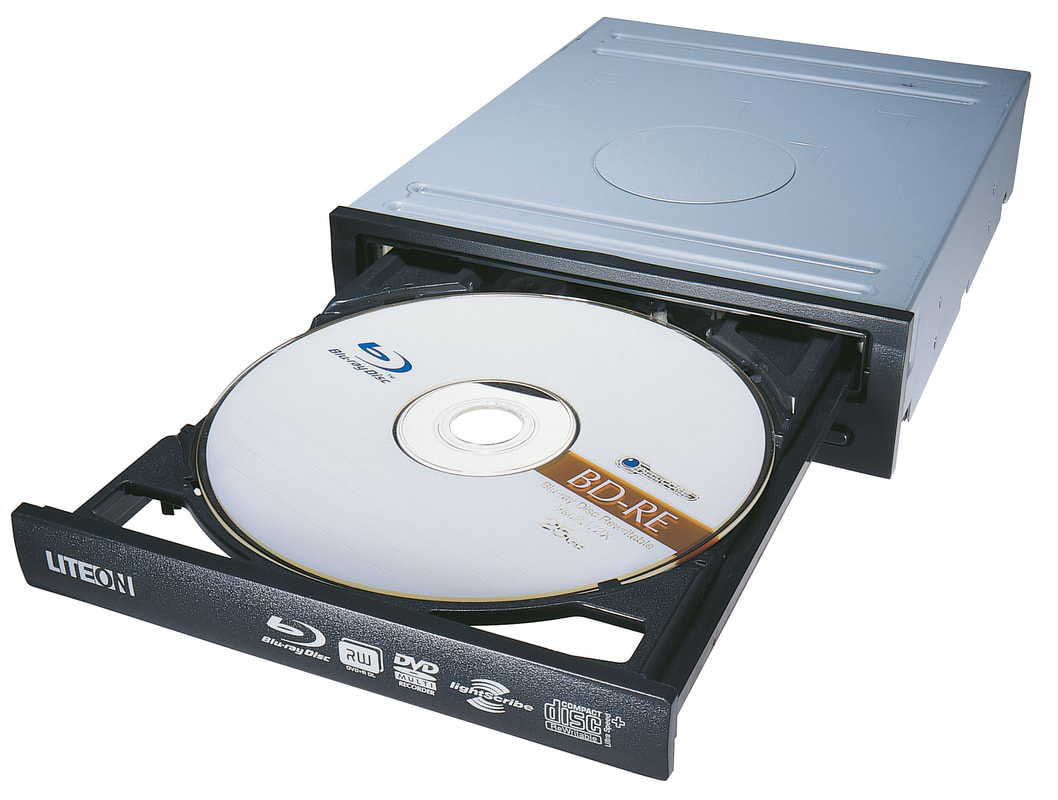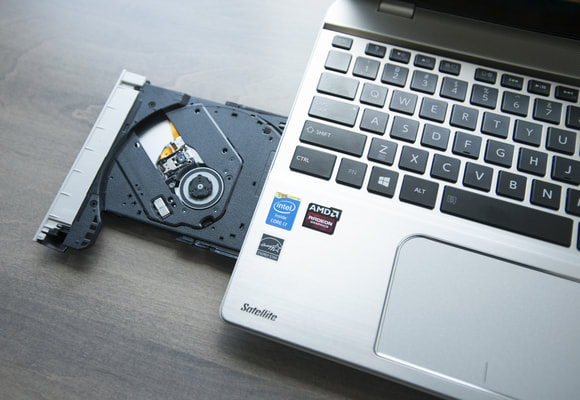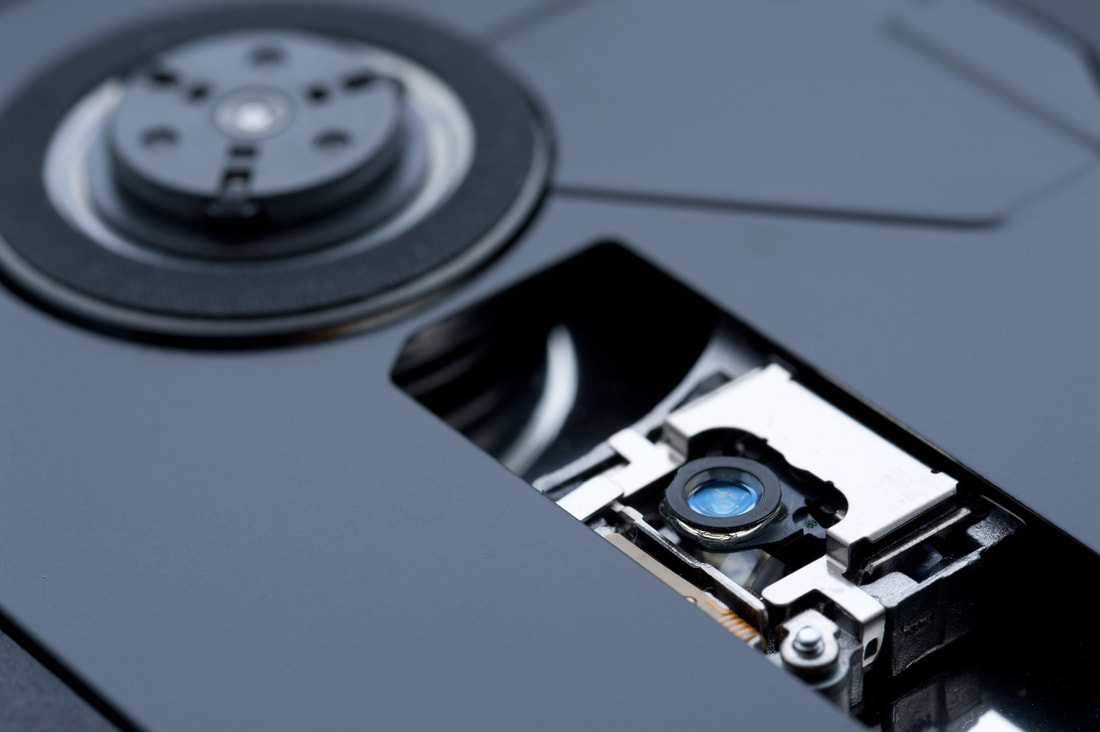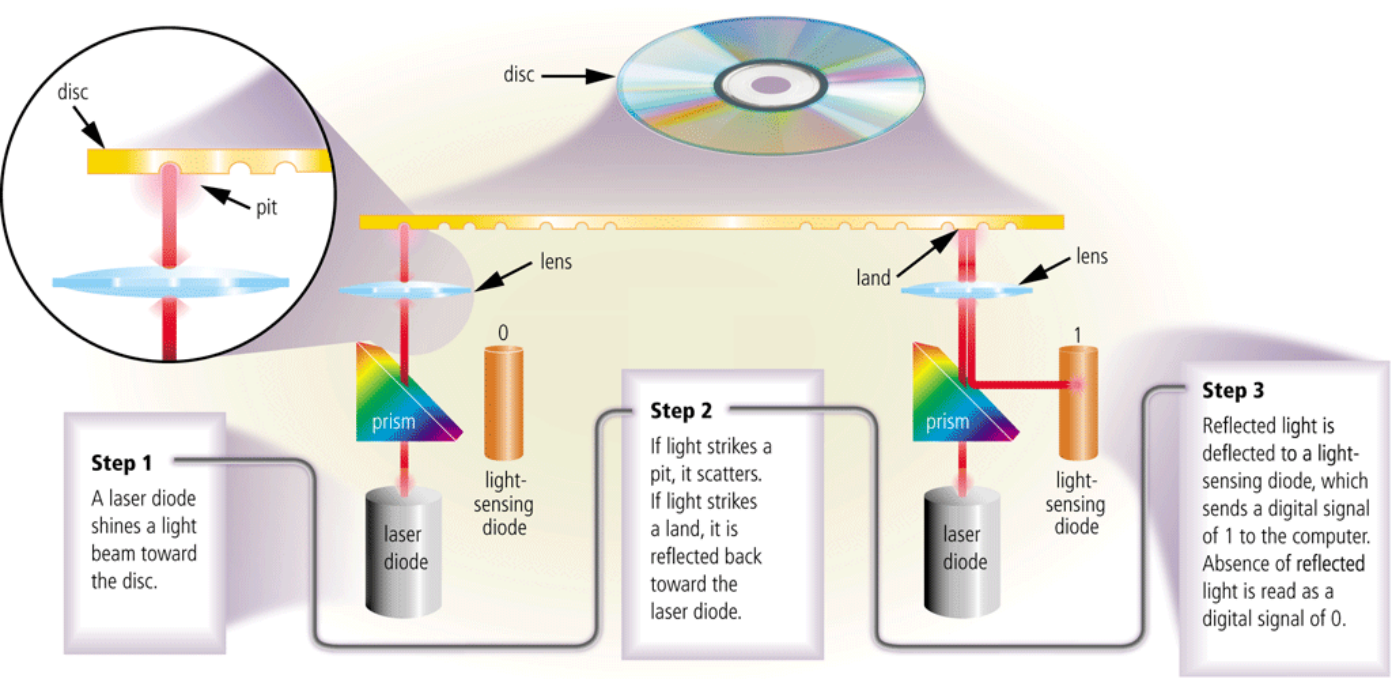Optical disc drive
Some computers have a (secondary) storage device called an optical disc drive. If you have ever bought a playstation/Xbox game from a shop, taken it home an put the disc in your console then you have used and optical disc (the game) and an optical disc drive (where you put the game)
Why is it called an "optical" disc drive?
This disc drive is called an "optical" disc drive because it has a lens in it. If you have ever seen anyone wearing glasses on their face, chances are they bought them from an "opticians" (another word for lens is optics). The optical drive contains an optical lens and a laser beam passes thought this optical lens.
Optical media and optical drive
Physical holes in the bottom of a disc |
How does an optical drive work?
|
Loading Optical drive
